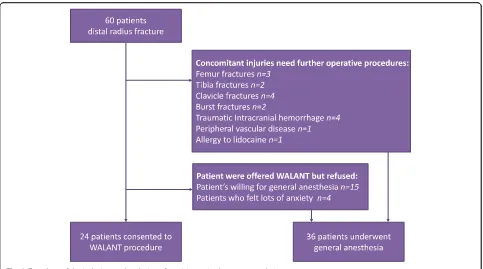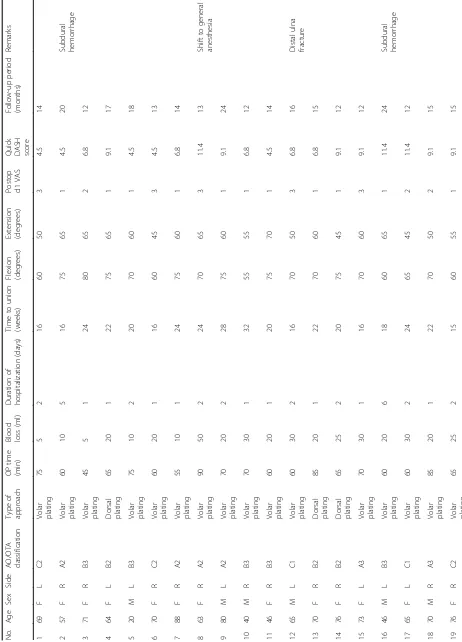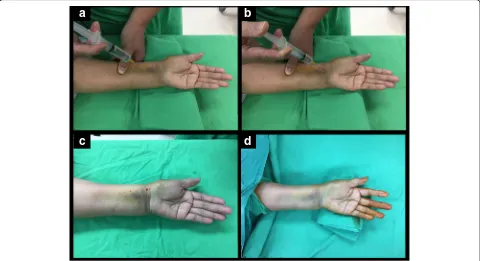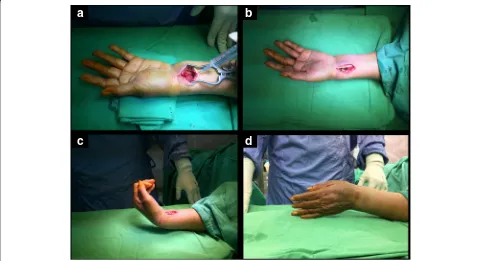WALANT for distal radius fracture: open reduction with plating fixation via wide-awake local anesthesia with no tourniquet
Full text
Figure




Related documents
i t is necessary to make a decision that will cause degradation to the environ- ment in order to satisfy other basic human rights (whether that be through policies ,
De problemområden som yttrat sig i studien, det vill säga de rekommendationer som de studerade kommunerna har rapporterat avvikelser ifrån, stämmer till stor del
To compare our results with the decay risk predicted by Scheffer’s climate index, we first investigated the relation between the sampling sites and the mass loss caused by
While we get expected results for the traditional determinants of innovation, our …rst estimate of the e¤ect of …nancial constraints on the propensity to innovate is inconsistent
Important design elements for a VC for patients include the presentation of content (information services), the functionalities, and the use of trust building components..
Since the majority of the flow in the study area is low and high usage, there are few micro watersheds are under medium pollution sensitivity are possibility for dilution of
Maximum hardness of 35Hv was obtained for sintered AA2024 and 45Hv for 0.5% MWCNT heat treated samples indicates that addition of MWCNT enhances the hardness which may be due to
This paper deals with the results obtained in experiments carried out to study the effect of photoperiodic cycles of varying lengths and also of light